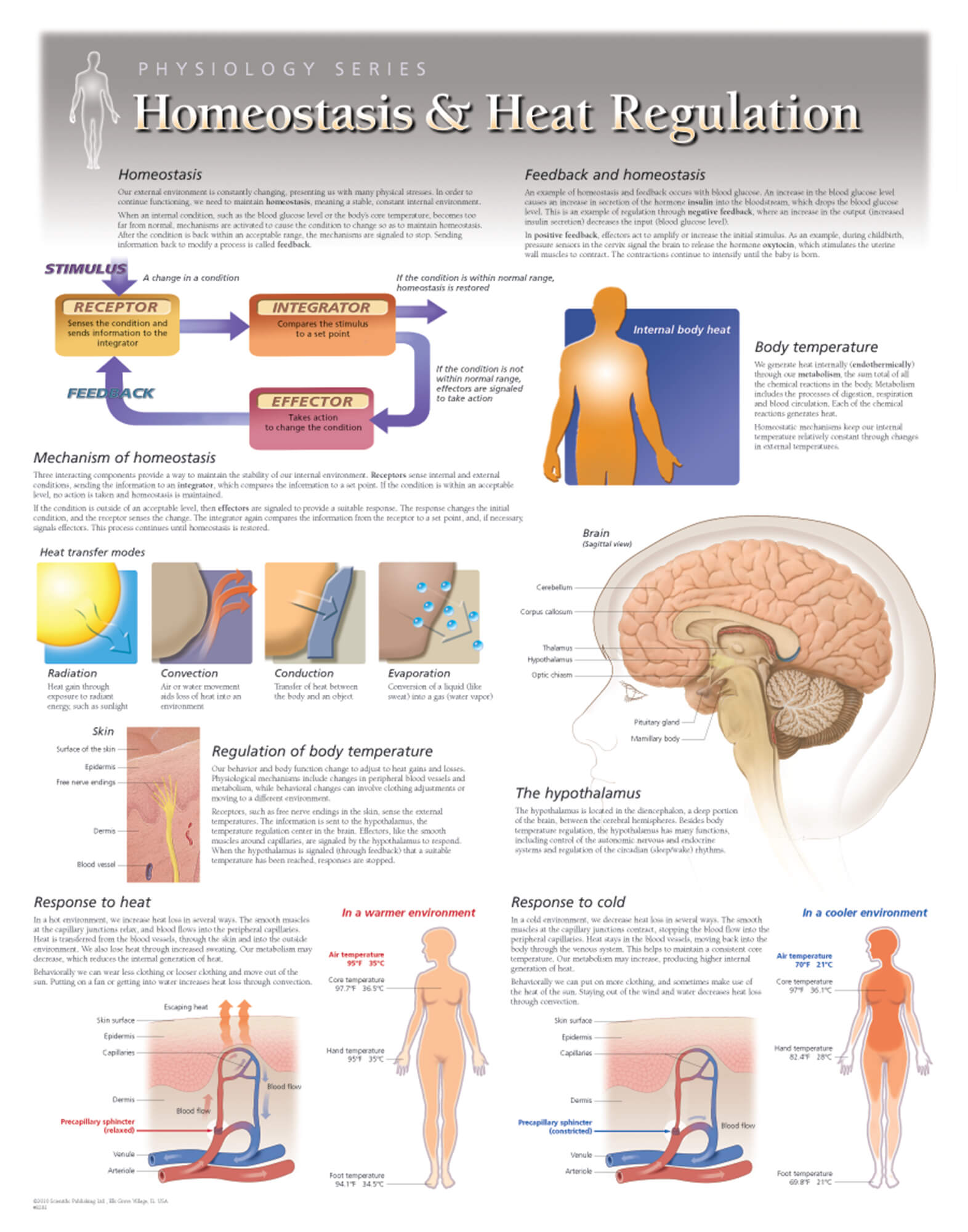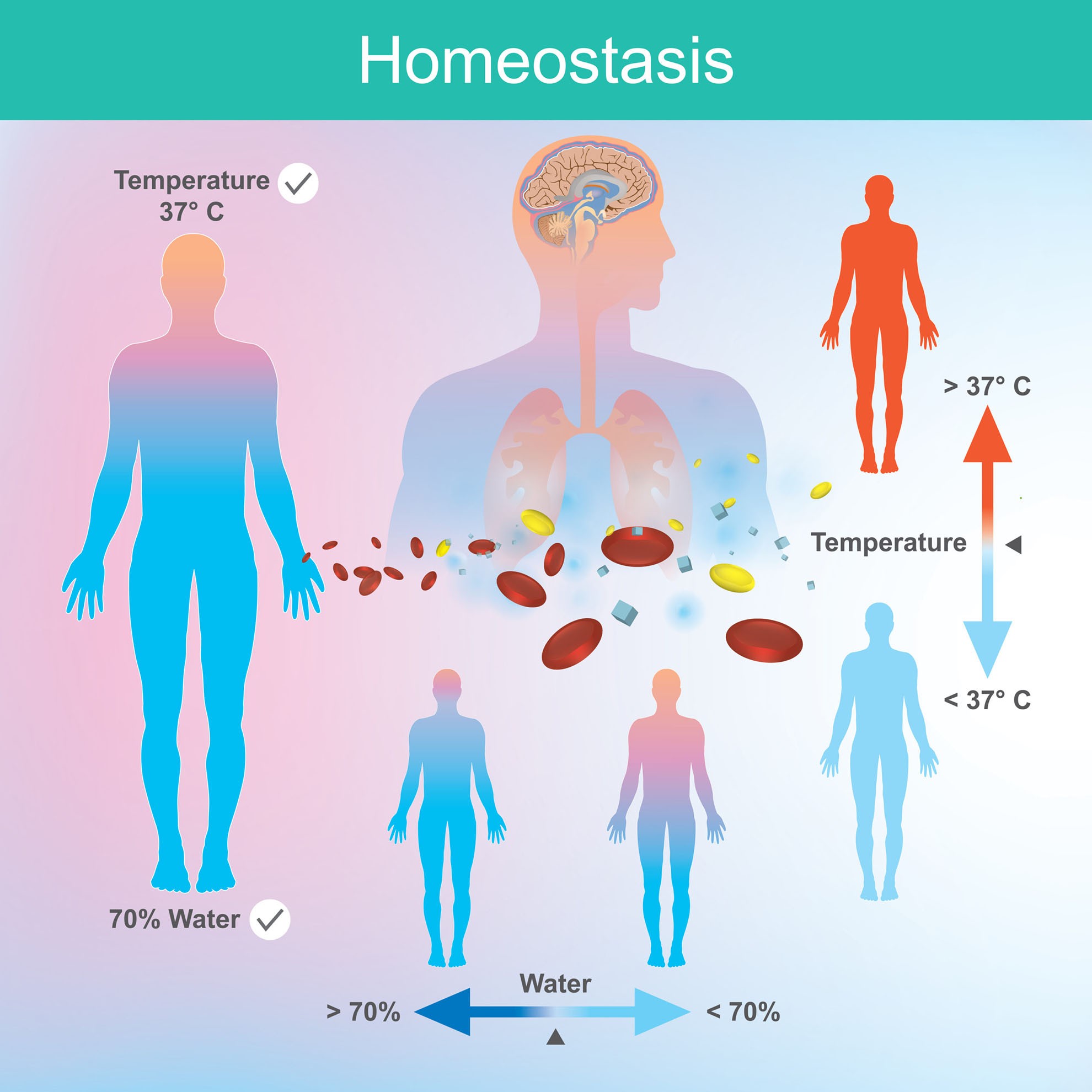Human Homeostasis Diagram 101 and 102 Homeostasis The structure Biology Diagrams More specifically, homeostasis is the body's tendency to monitor and maintain internal states, such as temperature and blood sugar, at fairly constant and stable levels. For example, one prominent theory of human motivation, known as drive-reduction theory, suggests that homeostatic imbalances create needs. These needs, in turn, motivate Homeostasis is a term that was first coined by physiologist Walter Cannon in 1926, clarifying the 'milieu intérieur' that fellow physiologist Claude Bernard had spoken of in 1865.[1] ' The human body is composed of thousands of control systems to detect change caused by disruptors and employ effectors to mediate that change.

It means your body senses a change and tries to counteract or reverse the unwanted change. Most homeostatic processes in your body rely on negative feedback. Examples of negative feedback homeostasis include: Blood pressure. Your blood pressure keeps blood flowing up toward your head against the pull of gravity. Body temperature. If you're Homeostasis is the self-regulation of processes in the body that maintains equilibrium of temperature, blood sugar, and much more. Homeostasis is a fundamental concept in biology that refers to the self-regulating process by which biological systems maintain stability while adjusting to changing conditions. This stability, or equilibrium, is essential for organisms to function effectively and Homeostasis is a physiological process that keeps the internal environment of a living organism stable and balanced. The constant equilibrium created by homeostasis is vital to the survival of every species. Even when the external environment is rapidly changing, homeostasis keeps the body's internal environment constant and steady.

What Is Homeostasis in Biology? Definition and Examples Biology Diagrams
Part 1: Homeostasis Homeostasis refers to a relatively stable set of conditions within an organism's internal environment.Within the human body, maintaining a healthy environment for living cells requires maintaining appropriate conditions in the extracellular fluids - including the interstitial fluid and blood plasma - for each living cell to be able to function properly. Body temperature control in humans is one of the most familiar examples of homeostasis. Normal body temperature hovers around 37 °C (98.6 °F), but a number of factors can affect this value, including exposure to the elements, hormones, metabolic rate, and disease, leading to excessively high or low body temperatures.The hypothalamus in the brain regulates body temperature, and feedback about How Does the Body Maintain Homeostasis? Body temperature control is a good overall example of how your body keeps balance. In humans, 98.6 F is the average body temperature. Various factors could
